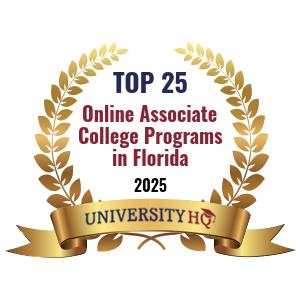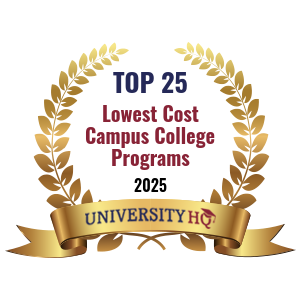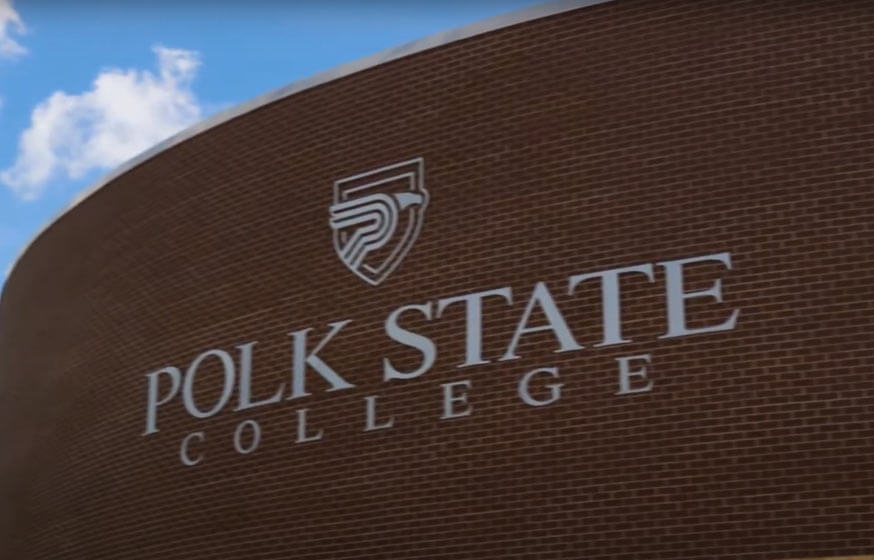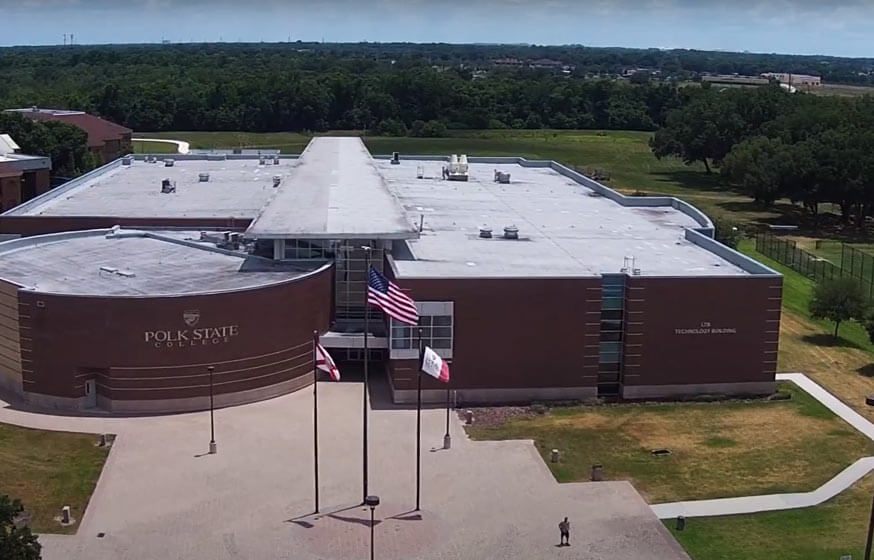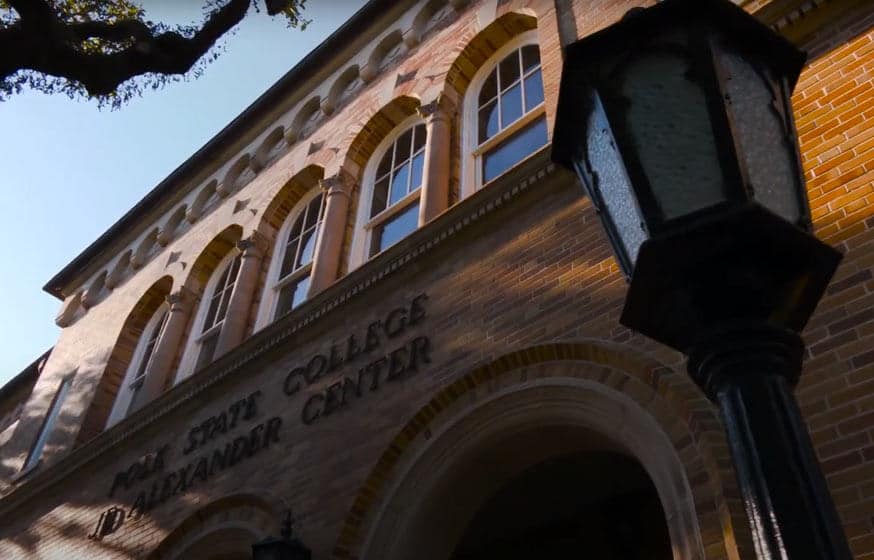University Headquarters (HQ) is an industry-leading, independent educational organization that provides independent college rankings using a proprietary formula to create first class unbiased rankings. The team at University HQ strives to provide accurate and trustworthy rankings that highlights the best programs.
Get Matched With Online Colleges
You may already know this if you’ve been considering this college for a while, but Polk State College offers three different learning options: on-campus, hybrid, and online-only. The college doesn’t offer on-campus living, but you’ll will be able to easily attend school from another city in Florida or a different state, depending on what your degree plans are. As you consider your career plans, remember to think about the degree level you need, whether that’s an associate, bachelor’s, or just a certificate. PSC offers all of these options.
Search All Programs
Overview of Polk State College
The city of Winter Haven is small, so there may not be much of a nightlife if that’s what you’re looking for, but you’ll easily be able to get off campus and find some restaurants or bookstores to enjoy if you plan to live nearby. If you like getting out into nature, you’ll find several wildlife areas and preserves and the whole town is surrounded by small lakes.
The student population is 10,591 with a student-to-faculty ratio of 24 to 1, which is somewhat high but includes students attending online. Still, you should be vigilant about contacting instructors quickly if you have questions about your classes.
Another plus at this school is that you may be able to receive credit for pertinent life experiences you have had and you can choose to earn dual credits. If you chose to earn dual credit, you’ll get college credit at the same time that you earn a high school diploma. Finally, if you took your advanced placement (AP) exams and passed them, these can earn you college credits as well.
General Information
| School Type | Primarily associate's, Public |
|---|---|
| Campus Setting | City: Small |
| Campus Housing | No |
| Student Faculty Ratio | 24:1 |
| Graduation Rate | 27% |
| Year Founded | 1964 |

Student Enrollment
Total Students10,591
10,591
0
Undergraduate Student
Male 3,707
Female 6,884
Graduate Student
Male NA
Female NA
Explore Map
Top Rankings For Polk State College
Admissions
APPLICATIONSNA
ACCEPTANCENA
Acceptance RateNA
Enrollment NA
| Admissions | |
|---|---|
| Application Fee | NA |
| High School GPA | NA |
| High School Rank | NA |
| High School Transcripts | NA |
| College Prep Courses | NA |
| Recommendations | NA |
| SAT/ACT | NA |
| TOEFL (Test of English as a Foreign Language) | NA |
| Application Deadline | N/A |
| Common Application Accepted | N/A |
Tuition Cost & Financial Aid
The total cost of one year of schooling at Polk State was $17,400 in a recent academic year. This is the total price and includes tuition (in-or out-of-state, which will change the cost somewhat), books, supplies, room and board in the form of rent, food, utilities, and other costs.
However, your parents may not need to pay this entire cost. If you qualify for financial aid, this will shave a large portion of the cost off your eventual bill. Universities and colleges track what is called the average net price, which is the cost students pay on average after their financial aid is applied to their bill. This was $7,265 in a recent academic year, but your cost will depend on how much financial aid you are eligible for. This relies strongly on your family’s annual income. Most recently, families that made less than $30,000 paid around $9,756 and families that made between $48,001 and $75,000 paid around $10,053.
About 72% (623) of first-time students in their freshman year qualified for financial aid. A smaller percentage (68%) received grants or scholarships averaging $5,385. And only 5% received institutional grants and scholarships averaging $1,775.
| Average net price | 2017-2018 |
|---|---|
| Net Price | $7,265 |
| Average Total Aid | $5,385 |
| Students Receiving Financial Aid | 72% |
| Room & Board | $8,339 |
Sticker Price
- Tuition In-State - $3,366
- Tuition Out-of-State - $12,272
- Books and Supplies - $2,000
- Room & Board - $8,339
- Other - $3,696
Academics
At Polk State, the overall graduation rate of first-time, first-year students is 28%. This is quite low, but it does not include those students who transfer out and graduate from another institution, or those who must leave school for a time and come back to complete their degree later.
If you are an on-campus student or if you are using the hybrid format, you should know that, if you experience a mix-up in your classes, you ay have the option to drop the on-campus class and add its online equivalent. In this way, you don’t run the risk of not graduating on time if the class you need is required for graduation and this is an excellent way to improve the flexibility of your class schedule.
The five most popular degree programs are business, management, marketing and related support services; health professions and related programs; homeland security, law enforcement, firefighting and related protective services; education; and transportation and materials moving.
Retention
Rate
4 year
Graduation
Rate
6 year
Graduation
Rate
Student Population Total
Student Population 10,591
10,591
0
Most Popular Programs & Majors
(# of Diplomas Awarded by Subject)
| All Business Majors | 259 Total Graduates / 59% |
|---|---|
| Business Administration, Management and Operations, Other | 259 Graduates |
| Health Professions and Related Programs | 92 Total Graduates / 21% |
| Registered Nursing/Registered Nurse | 92 Graduates |
| Homeland Security, Law Enforcement, Firefighting and Related Protective Services | 60 Total Graduates / 14% |
| Criminal Justice/Safety Studies | 60 Graduates |
| All Education Majors | 22 Total Graduates / 5% |
| Elementary Education and Teaching | 16 Graduates |
| Early Childhood Education and Teaching | 6 Graduates |
| Transportation and Materials Moving | 7 Total Graduates / 2% |
| Aeronautics/Aviation/Aerospace Science and Technology, General | 7 Graduates |
| All Other Diplomas | 0 |
Outcome & Salary
After graduation, you may already have a job in your chosen career. That’s the plan at least. Graduate’s from Polk State College earn early-career salaries averaging just over $42,000 and by the time they reach their mid-career, their average salaries sit at around $74,600.
Now, if you want to look at what that means over a period of time, these numbers mean that graduate’s 10-year earning potential may be $400,000. Their 20-year earning potential may increase to $1,146,000. Now, if you subtract the average 4-year cost of education ($19,060) from the 10- and 20-year potential totals, this can tell you the expected return on investment (ROI) from this education. It gives you a 10-year projected ROI of $370,940 and a 20-year projected ROI of $1,116,940.
Some high school students may choose to go straight to work after graduation. Their national average salary sits at around $38,792 with, it’s true, no loans to repay. However, this makes their 10-year projected income $387,920 and their 20-year projected income around $775,840.
| Graduates Salary | |
|---|---|
| College Grads Early Career Salary | $42,100 |
| College Grads Average Salary | $40,000 |
| College Grads Mid Career Salary | $74,600 |
| Return on Investment (ROI) | |
|---|---|
| 10 Year Salary Earnings Potential | $400,000 |
| 20 Year Salary Earnings Potential | $1,146,000 |
| Cost of Education (Net Price) 4 Year | $29,060 |
| 10 Year Projected ROI | $370,940 |
| 20 Year Projected ROI | $1,116,940 |
| No College Education Salary Comparison | |
|---|---|
| National Average Salary | $38,792 |
| 10 Year Projected Income | $387,920 |
| 20 Year Projected Income | $775,840 |
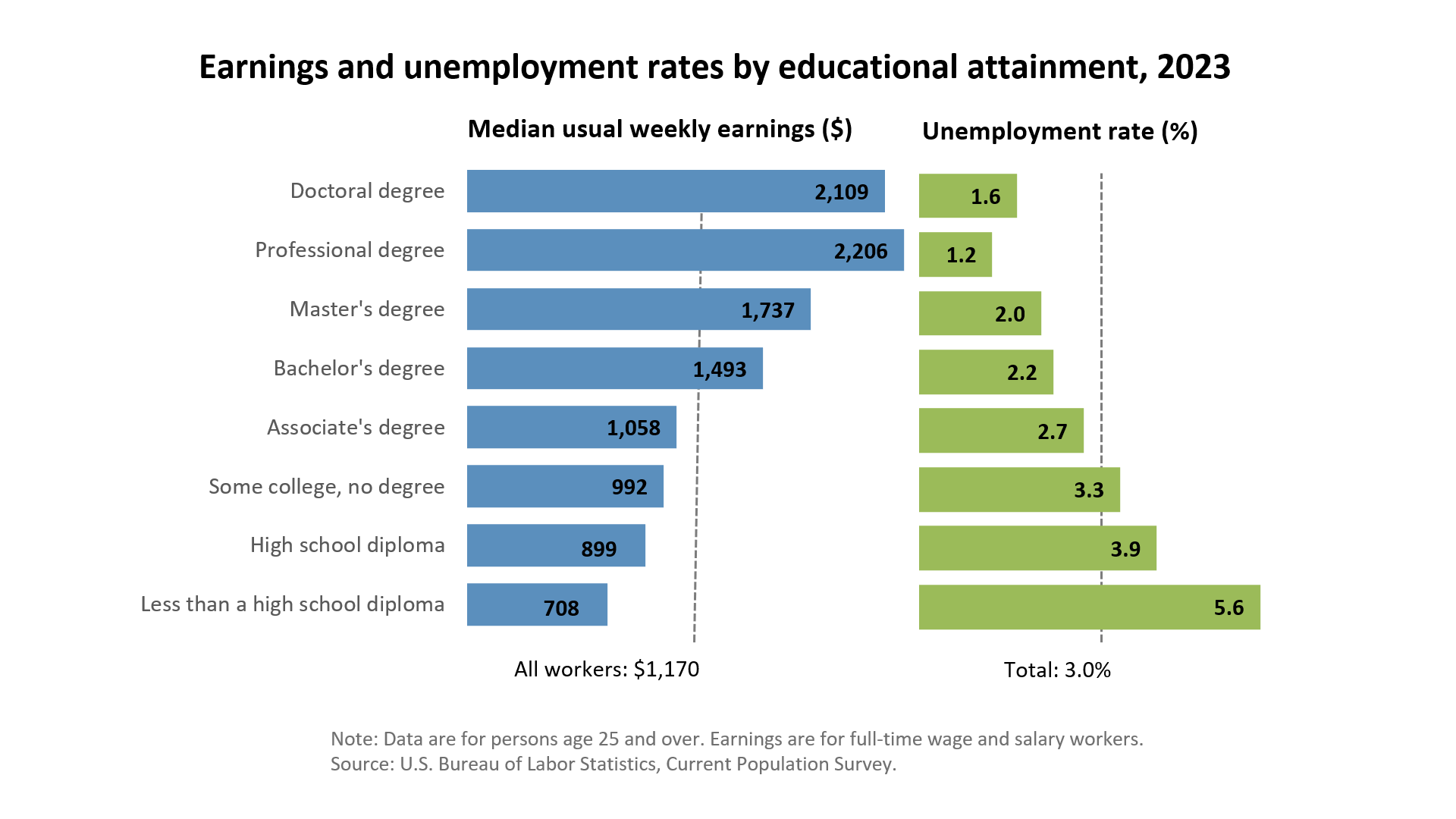
Related Top College Resources


